The state of medical tourism in Vietnam
Vietnam has one of Southeast Asia’s fastest-growing economies and has set its sights on becoming a developed nation by 2020. Tourism has increased at a steadily impressive rate over the last 10 years. In 2010, Vietnam welcomed nearly four million international tourists. Most visitors come from China, with around 10 percent coming from the US, Japan and South Korea. Building on this success, the Vietnam National Administration of Tourism is looking to develop and diversify the tourism industry. Will medical tourism be a part of this expansion?
When Keo Kak, 58, crossed the border from Cambodia into Vietnam on his way to Cho Ray Hospital, he became a medical tourist. Defined in its broadest terms by the Medical Tourism Association, medical travelers are “people who live in one country [but] travel to another country to receive medical, dental and surgical care while at the same time receiving equal to or greater care than they would have in their own country, and are traveling for medical care because of affordability, better access to care or a higher level of quality of care.”
However, this niche market within the travel sector has proven notoriously difficult to study and quantify, in part because it requires sensitive information to be shared between countries and industries, a hard ask when anonymity is considered an attractive feature of medical tourism for many. Keith Pollard, Managing Editor of the International Medical Travel Journal explains: “There is no standardized approach to collecting data on medical tourism, and most of the numbers that you see on the Internet are wild guesses or invented by those who want to hype the market. Different countries in Southeast Asia attract different patients from different countries for different reasons.”
Add to that the blurred nature of what exactly makes a medical traveler. Some industries take a more narrow view and exclude outpatients, dental patients, patients returning to their (or their parents’ or grandparents’) country of origin for treatment, people who decided to mix travel for medical care with travel for other purposes, and patients traveling across borders to nearby countries (such as between Cambodia and Vietnam). Therefore, the estimated number of medical tourists worldwide ranges wildly from 60,000 to 50 million, spending upwards of USD60 billion annually.
For years, Vietnam has been a medical treatment destination for Cambodians where the healthcare system is less developed. Local Khmers wryly say that the hospital is a place where people go to die, not to live.
Kak had been dealing with an enlarged heart condition for years, bouncing between doctors without seeing much improvement. Kounila, his daughter, talks of their experience: “There are some good hospitals with good doctors in Phnom Penh, but they spend most of their time at their private clinics, so regular patients don’t get good care. We tried going to a heart center, but the staff were unethical and we just got fed up. The newer, international hospitals are just too expensive.”
On the advice of a patient with a similar ailment who told of his improved condition after seeing doctors in Vietnam, Kak decided to obtain cross-border care. Kounila remembers accompanying her father to Vietnam. “My first impression of Vietnamese doctors was very good. After a brief registration, he was put into a wheelchair and went right in to see the doctor. The hospital was well-equipped and the doctor spoke some English.”
Kak belongs to the estimated 250 Cambodians who cross over into Vietnam daily seeking medical treatment at Ho Chi Minh City’s hospitals, often at Cho Ray, FV and the Medical University Hospital (commonly known to Cambodians as “215”). Some of these hospitals have Khmer-speaking staff on hand to service these medical tourists. Other patients employ freelance interpreters, as Kak does, at USD10 per visit. According to the International Medical Travel Journal, the number of Cambodian patients treated at Cho Ray Hospital increased by over 90 percent between 2008 and 2011, prompting the hospital to start construction in 2010 of a Phnom Penh branch, with the first 200 of a proposed 500 beds set to open this month.
While it may be a stretch to describe Kak as a conventional “tourist,” people like Kak fit the traditional model of international medical travel, journeying to more developed countries in search of health care, meanwhile consuming services associated with travel, such as transport, lodging, and hospitality. On one trip, he even brought his family with him and after a doctor’s visit in the morning, took the evening bus to Dalat for five days.
A Niche Market
However, a growing number of medical providers in Vietnam are seeking to capitalize on the more lucrative medical tourism niche spearheaded by regional powerhouses like Thailand and India, where patients are from highly developed countries traveling to less developed areas of the world to receive quality medical services at a fraction of the cost compared to their own country.
George Adams, CEO of Medical Tourism Vietnam, a Hanoi-based medical tourism company, describes the current state of medical tourism in Vietnam as “in supreme infancy”. “At the moment, it is simply convergence, not cost,” he says, as to why someone would come to Vietnam as a medical tourist. “The client has already booked a holiday [here].”
Dr. Rafi Kot, CEO of Family Medical Practice, comments bluntly on the current medical offerings: “What we have here isn’t medical tourism the way you and I understand it. Vietnam isn’t even on the map yet. Cambodians come to Vietnam because it’s slightly cheaper than Bangkok. [As a Westerner,] if I saw it advertised in my hotel, I might consider it. But I wouldn’t fly in for it.”
Mr. Tuan-Anh Le, Director of Marketing for the Vietnam National Administration of Tourism agrees. “Medical tourism in Vietnam hasn’t been developed. The number of domestic tourists on medical tours is limited, and the number of foreigners coming to Vietnam as health travelers is only a few hundred a year. So far, these products and services are part of a larger packaged tour and haven’t gotten to the point where they’ve become the primary reason for someone to come to Vietnam.”
Experts concur that Vietnam is still years away from being known as a typical medical tourism destination – glitzy, high-tech machinery operated by foreign-trained doctors in a setting which looks more like a five-star resort.
However fragile, though, some pieces of the puzzle are in place. “Vietnam has a lot of pluses,” says Tuan-Anh. “Traditional Vietnamese medicine contains the essence of Oriental Medicine. A case in point is acupuncture which has been recognized worldwide as being effective in treating many ailments. Vietnam is also endowed with many natural resources suitable for the development of centers for relaxation, rehabilitation and treatment. There are already tours like this, like in Quang Ninh where travelers can combine a visit to the Yen Tu Temple with an herbal medical treatment, or in Khanh Hoa, where tourists can relax and have an Ayurvedic treatment at the mineral hot springs. There are also eco and wellness combination tours like the Oriental Medicine treatments in Dong Thap Muoi and herbal bath treatments by ethnic minorities in Sapa.”
For now, medical tourism in Vietnam seems to be focused on general wellness (also known as health tourism) like the spa industry, along with dental care and minor surgeries, largely procedures which are not heavily invasive and do not require long recovery time or specialized post-procedure care, allowing travelers to continue on with their non-health related trip.
Organically Grown
Even so, the industry looks to be growing organically rather than systematically, being supported by national strategies as the Thai, Indian, Singaporean and Malaysian governments have in place. Australian David Kelly, owner of Dental Assistant Vietnam, a dental referral service, says that his business started with friends asking him to find them good dentists. “Most Australians come to Asia because of the proximity and because dental costs in Australia have skyrocketed. Medical is covered by government insurance, but dental isn’t. So when they have to pay for something, they realize how expensive it is.”
David’s clients say that dental costs in Vietnam are about a quarter of the price of Australia. “Back home, a filling costs a few hundred dollars. Here, for the same price, you can get a cap on top of the filling. Vietnamese dentists can do everything from basic fillings and cleaning, right up to implants, veneers, bridges and crowns. One of our clients needed a lot of implants. He was quoted AUD20,000 in Australia and ended up getting them done here for AUD5,000. People are starting to discover that they can get as good a job done in Vietnam as in Thailand, a country which has really taken the lead in dental tourism over the past 10 to 15 years.”
Dr. Duy An Vo, Director of the Nu Cuoi Duyen Dental Clinic, where 70 percent of his foreign patients are Viet Kieu, agreed that economics was the driving factor for dental tourism. “Vietnam is much cheaper than Europe. After adding up the costs of buying a plane ticket, visiting family and going sightseeing, there’s still some money left over compared to what they’d have to spend getting treatment in their home country. Even compared to Singapore and Thailand, Vietnam is four to six times cheaper.”
Medical tourist Huynh Phan brought her husband to Vietnam to have a partial denture made. “It was only USD300. In the US, it would’ve been at least five times that much. We got a recommendation from friends and the quality seems to be good. It was a good compromise, to be able to visit family while getting dental work done.”
On the issue of quality, David says of his recommended dental clinics: “The implants done [at our clinics] are manufactured in other places like Switzerland, Germany and Israel and are mainly fitted here using Vietnamese labor.” However, Tri Phan of Phann Dental Laboratory in Houston, US advises caution. “I’ve had clients get dental work done in Vietnam and when something breaks, they have to see a dentist here because it’s too expensive to keep flying back. Some of the work I’ve seen isn’t as good as in the US; I’d rate it four or five out of 10. Here, to open a lab, you have to pass exams and be certified. In Vietnam, dental skills are often passed from father to son. In the US, you have to use materials approved by the FDA [Food and Drug Administration]. In Vietnam, you can use any material. I’ve seen some of the metal used to cast crowns and they contain lead which can be very dangerous. The standards are nowhere as strict as in the US.”
Plastic or Non?
Another area making small inroads in Vietnam is cosmetic surgery. Dr. Kot recalls an Australian patient who came to his clinic with all her girlfriends, having traveled to Vietnam to get tailored dresses for an upcoming wedding. The bride-to-be said that it was 10 times cheaper than going to a tailor in Australia, even with flights and hotel included. The same can be said for plastic surgery.
“There are a few things done in Vietnam which attract tourists. One of them is plastic surgery. It’s a big thing in Asia. The mother and father of plastic surgery is South Korea. If you’re 14 and don’t get a lip job, that means Mom and Dad don’t love you. In the US, it’s traditionally very expensive; it’s a luxury.” But despite the slowdown of the US economy, “the demand for cosmetic procedures has not decreased. In the UK, estimates project that the number of cosmetic procedures nearly doubled from 2005 to 2007,” says a report commissioned by the Deloitte Center for Health Solution.
Hans van der Broek, a Hoi An-based tour operator looking to break into the medical tourism business notes that “for cosmetic surgery, small facial corrections are popular [in Vietnam] and especially non-surgical treatments like reducing wrinkles, skin whitening and laser treatments. But not a lot of Western visitors will take the risk for plastic surgery.”
Dr. Kot adds food for thought: “Vietnam may be cheaper, but don’t forget that plastic surgery is different when it comes to Asians and Caucasians. They have different skin, different aesthetics.”
In order to become more of a regional player in the medical tourism niche, Vietnam must overcome issues that similarly plague the global industry and then some. The Medical Tourism Climate Survey 2013, funded by the International Medical Travel Journal, polled more than 400 industry people in 77 countries and found that the most important factor for a medical tourist in choosing a health care facility in a particular country are the expertise and qualifications of the doctor / dentist. However, without going through a medical broker, potential medical tourists are left with a dilemma when it comes to Vietnamese credentials. Out of a reported 100 government-owned hospitals and medical centers in Ho Chi Minh City, not counting the dozens of privately-owned clinics, only one center, the Cao Thang Eye Hospital, is accredited by the Joint Commission International, one of the health care industry’s most prominent accreditation institutions. In contrast, 22 organizations are accredited in Singapore and 41 in Bangkok alone.
“As long as Vietnamese doctors who graduate in Vietnam cannot work overseas because no OECD (Organisation for Economic Cooperation and Development) or Western country recognizes their training, there will be no medical tourism in Vietnam. Vietnam has no ‘brain re-drain’ happening (the trend of local doctors studying abroad and then coming back to practice in their home country). Nobody needs doctors from Vietnam because they don’t qualify. As long as Vietnam is losing a billion dollars from Vietnamese going overseas to seek treatment, what are we talking about?” asks Dr. Kot. “New hospitals are called international, but there’s nothing international about them. It’s the same guys working at overcrowded public hospitals, just moving over to private industry. Just having a white coat and a cravat [in a building] with the word ‘international’ doesn’t justify adding a zero to the bill.”
Dr. Vo, though, is more optimistic. “Foreign doctors I’ve met at conferences say that the skill level of Vietnamese doctors is delicate, even masterful compared to foreign doctors. Vietnam has access to the most up-to-date techniques. When a new technique comes out, companies that specialize in equipment and products organize seminars and bring in foreign specialists because they want to get those products into the market ASAP.”
The Risk Factor
Another area of concern is the issue of liability. A 2011 medical tourism review commissioned by the OECD poses the question, “In the event of an adverse outcome arising from failings in clinical and professional practice, how do patients fare in seeking redress given there is no international regulation of medical tourism?”
“Most of the time, there is no recourse in case of trouble. Putting pressure on people to refund in case of problems is often the only way to get some of the money back. But by then, the damage is already done,” says Hans.
Dr. Vo agrees: “Registered medical clinics are inspected twice a year. But the Vietnamese health care system isn’t far enough along to address what to do in the case of malpractice. Malpractice insurance isn’t required. Usually, the patient will negotiate a settlement directly with the clinic. But the maximum payout is USD10,000 to USD20,000, not in the millions like in the West. And whether the clinic can afford to pay is another matter.”
Keith cautions, “[Medical travelers] must factor in the risk. Lower price means higher risk. If something goes wrong, then they will have to pursue the doctor/clinic through the legal process in the destination country. And there is usually little chance of this happening.”
Specifically to Vietnam, Dr. Kot adds, “Compensation here is usually limited to just millions of dong, so it’s not worth it. If you want good doctors, you’ve got to pay them. Nobody likes to pay for health care. Vietnam ranks at number 133 out of 200 countries in expenditure on health. If you need big surgery and it’s elective, go home. Be with your family,” he advises. With only a handful of brokers working to bring medical tourists to Vietnam, for now at least, individuals are largely making their own decisions regarding their health needs, the best form of treatment and the most qualified provider. The Medical Tourism Climate Survey 2013 found that most providers are funneling the bulk of their marketing dollars into website content. However, the OECD review warns that because “internet sites are relatively cheap to set up and run” and are often “not subject to clear quality controls or advertising standards,” the information presented may be selective, conveniently ignoring issues such as post-operative care and support.
Referral services like Dental Assistant Vietnam aim to be simply that – a source of information which the prospective patient must process themselves. Owner David Kelly says that when he was looking at dentists, “information was lacking. There wasn’t a website that we were happy with that had all the information in one place. Some people don’t trust coming to a developing country, so we act as the middleman. We give them information about qualifications, cleanliness, photos of the dental office, what they specialize in and feedback from previous clients. We’re a little bit like the Agoda of dental treatment. We present a lot of similar clinics and provide information. Clients can compare and then make the decisions themselves.”
What the future holds for medical tourism in general, a maturing cottage industry which has been projected to grow in excess of 35 percent annually, and for medical tourism specifically in Vietnam, is uncertain. Keith says, “Whether Vietnam is an attractive destination will depend on which target markets it wishes to explore. There will be very different reasons for patients from Australia seeking dental treatment to those from Myanmar seeking heart surgery. Obstacles for Vietnam include the level of competition from other destinations within the region, for example Malaysia, Singapore and Korea. The lack of a clear strategy is also a drawback. This takes time to develop. [There also needs to be] financial backing from the government or from individual hospitals and clinics to actually put Vietnam on the map.”
Tuan-Anh of the Vietnam National Administration of Tourism, while pragmatic, remains optimistic. “It’s true that the quality of medical services in Vietnam has yet to meet the high requirements of international visitors. Facilities are small and often overcrowded and the staff do not speak a foreign language. There’s also a lack of cooperation between hospitals and travel companies to develop products and services to attract medical tourists.” However, he shared some recommendations from the Strategy and Master Plan for Tourism Development 2020, with a view to 2030, such as developing the traditional medicine and herbal therapies sector indigenous to Vietnam; encouraging the construction of hospitals aimed at medical tourists, complete with modern hotel facilities and international standard treatment rooms and staff; and coordinating with the Ministry of Public Security to devise preferential extended visa policies for international visitors who are coming for health tourism.
Hans of Green Apple Hoi An predicts, though, that “as long as there are no strict health regulations and some kind of backup in case of problems, [medical tourism] will not really take off. It will remain an add-on to tour packages.”
Images by Quinn Ryan Mattingly and Nam Quan


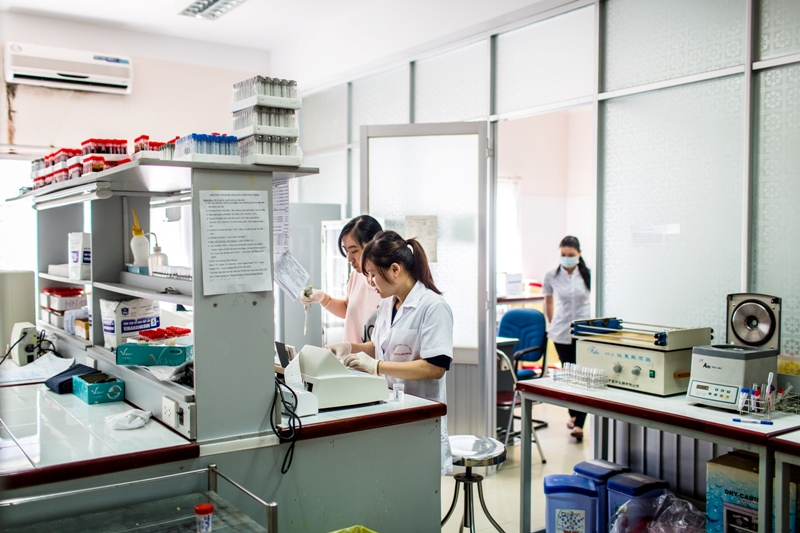
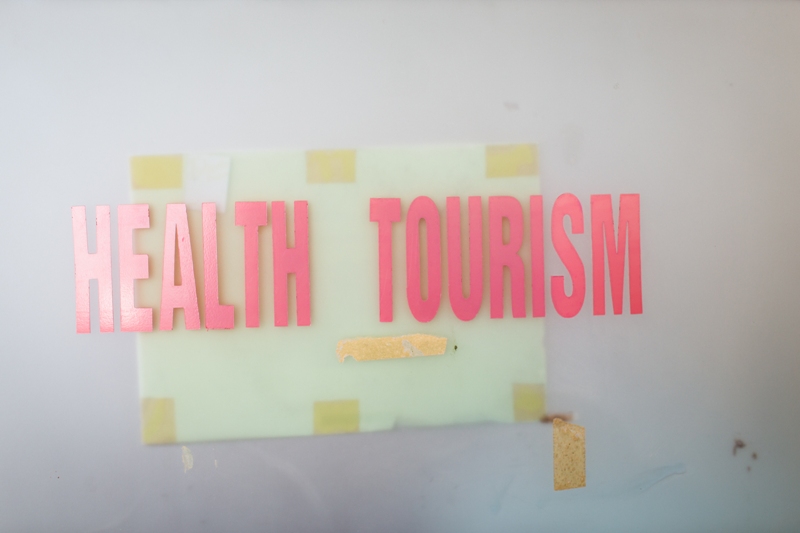
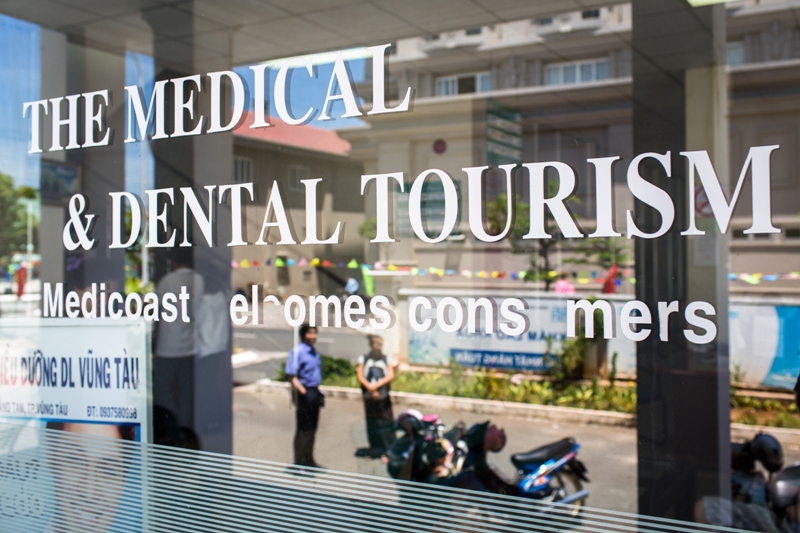
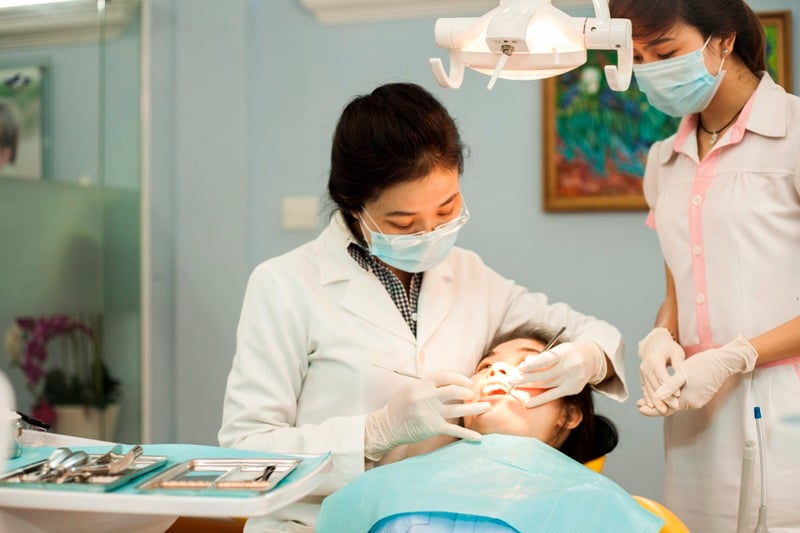
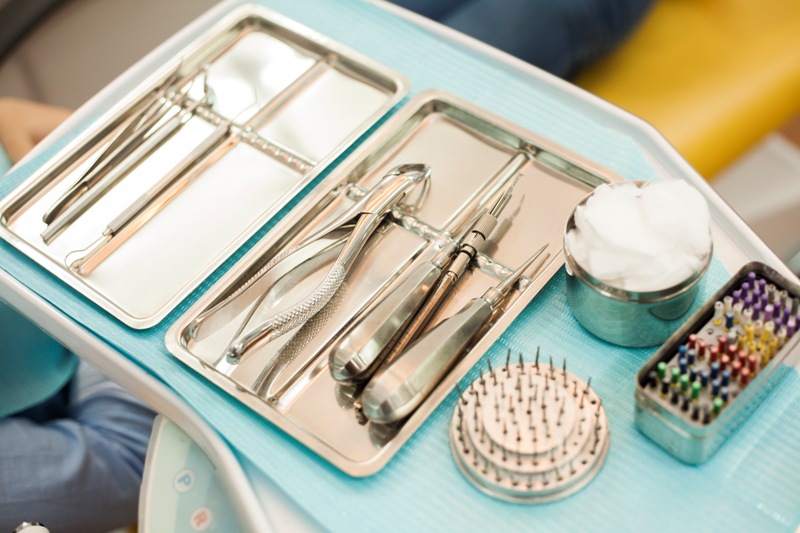
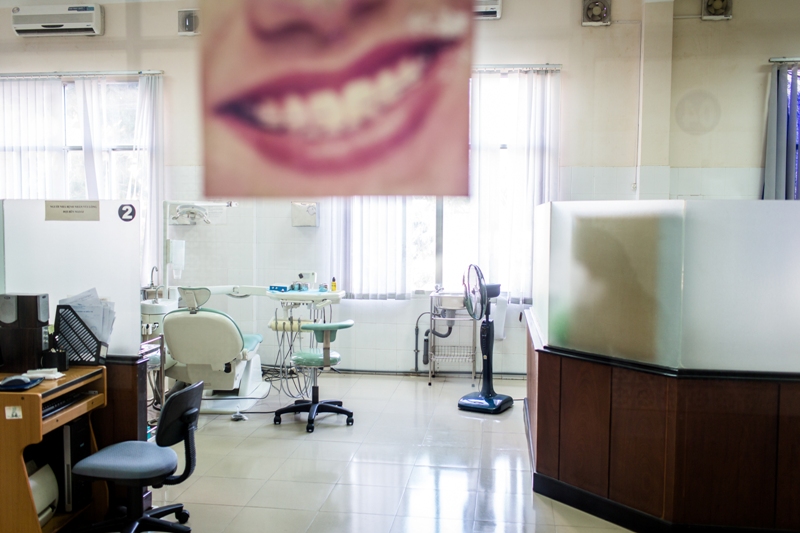
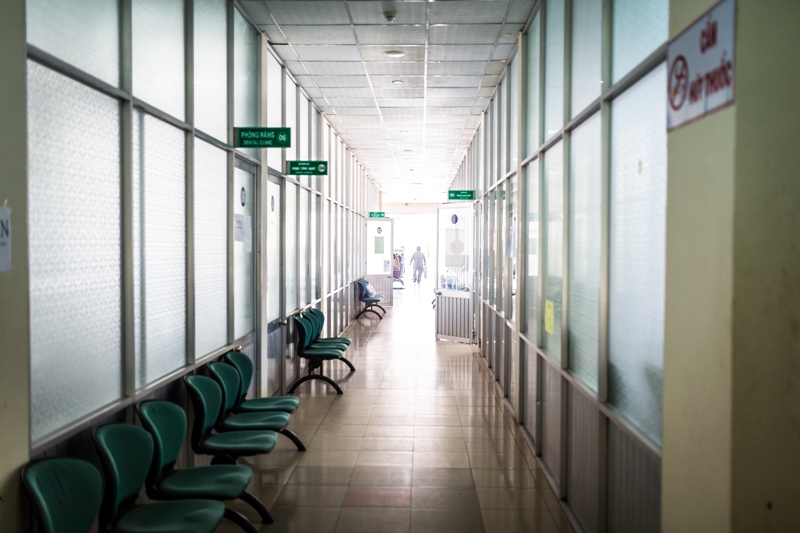

2 thoughts on “Sun, Saigon… and Surgery?”
There was no link to our site from the article, which mentions our services , so
here it is : http://www.hcmcdental.com
We introduce you to the Best dentists in Saigon -free!
thank you ~~